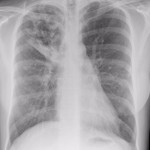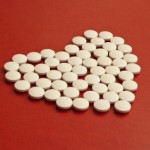We're in the prime of our CSA delivery season; fresh vegetables started three weeks ago and fruits this week. Many of our meals consist of spinach, lettuce, beets, rhubarb, apricots & cherries, with milk and/or cheese or yogurt. We rarely, if ever, shop for any "prepared foods," always check labels for sodium content, and only eat out, other than our weekly Thai food splurge, for birthdays and other occasions. I'm firmly convinced that less sodium (often termed "table salt," but most typically found in processed foods and restaurant dishes) is better for us.
So when I started reading an article in the ACP Journal Club section of the January 2012 issues of the Annals of Internal Medicine that was titled "Review: Interventions to reduce dietary salt do not reduce mortality or morbidity," I was skeptical. The original article, published in England, was a meta-analysis, a statistical look at a group of research studies. In this case seven randomized controlled trials were lumped together, and according to the Journal Club, the conclusion was as in the article's title.
But the US and Canadian reviewers disagreed. In people with normal, borderline, or elevated blood pressure, 6 of the 7 studies showed variable results and the pooled data did not reveal statistically significant decreases in death rates or medical complications. I went to the original article and the authors actually say, "Despite collating more event data than previous systemic reviews...there is still insufficient power to exclude clinically important effects of reduced dietary salt..."
That translates, to me, as "we don't know yet what happens when millions of people lower their salt intake." The reviewers, being ultra cautious, say, "...we are unaware of compelling evidence showing that consuming less sodium in the general population is harmful."
A free-lance science writer wrote an article in Scientific American in 2011 with the title, "It's Time to End the War on Salt." She argues that the data linking increased salt intake and various diseases is not solid.
Yet there are lots of studies showing a strong link between salt intake and blood pressure and others claiming a similar correlation between dietary sodium and cardiovascular disease.
One country that decided to act on these supposed connections was Finland. In the late 1970s a national-level campaign was started to include mass media education, monitoring of urinary sodium excretion and food-industry cooperation using salt substitutes. The average sodium intake was cut by nearly 30% and over the next ~24 years stoke and heart attack deaths went down by 60%. Was this cause and effect? I'm not sure, since other factors may have played a role and the initial average salt intake was quite high.
But a December, 2011, New York Times article, with the striking title, "Sodium-Saturated Diet Is a Threat for All" led me to find another kind of salt that plays a role. I found the July, 2011, Archives of Internal Medicine research report, "Sodium and Potassium Intake and Mortality Among US Adults" and realized I was on the right track with our diet.
It's not just too much sodium chloride, the kind of salt some use at their dining room tables, manufacturers add to processed foods and restaurants to their recipes to add flavor and preserve food. It's also how much potassium you eat (in fruits, juices, vegetables, fish, nuts and meat), that makes a difference. In this case, within reason and assuming you have normal kidney function, more is better.
I'm going downstairs and eat some fruit and perhaps a baked potato and yogurt, all high in potassium and relatively low in calories.















